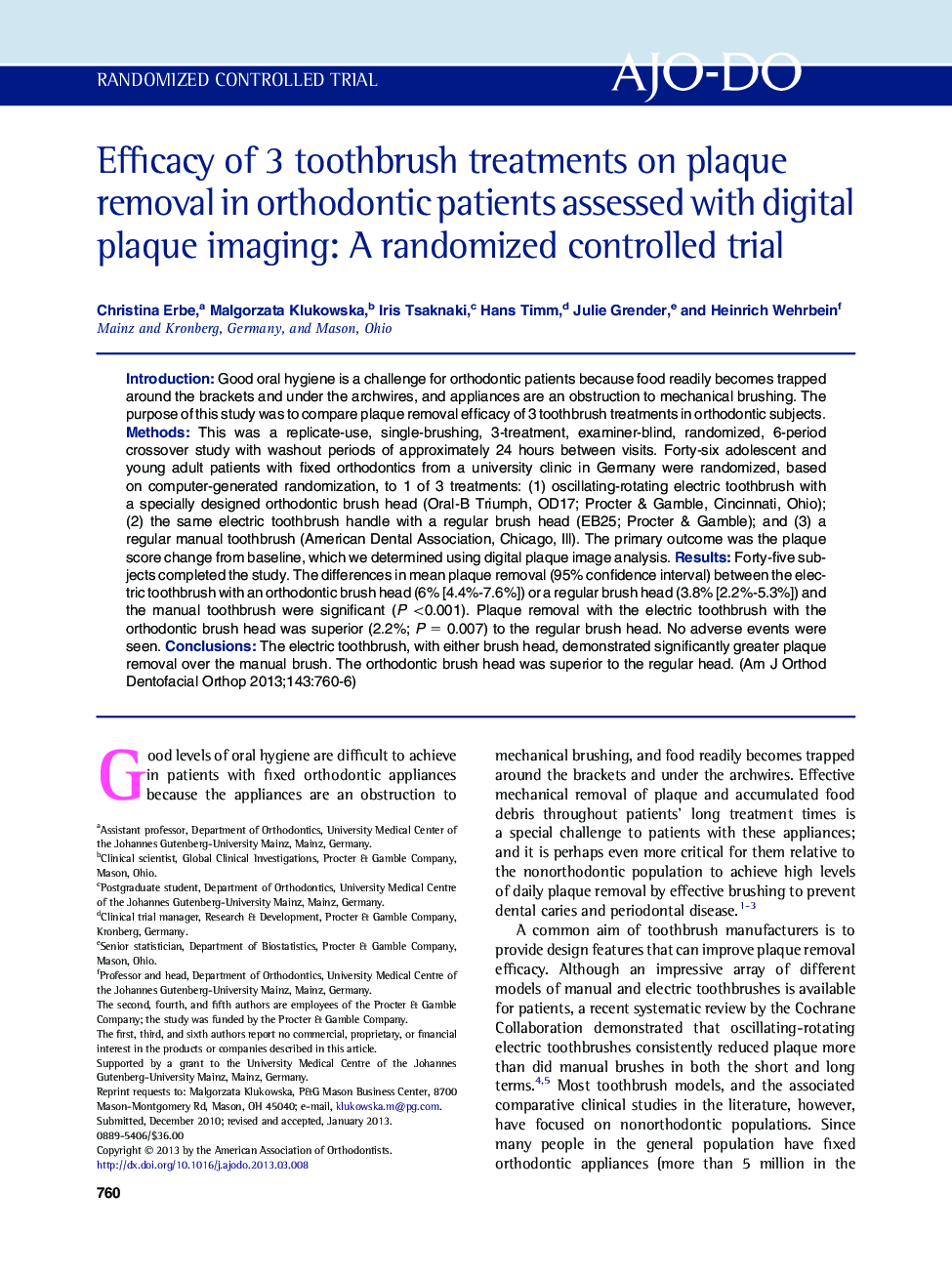| Article ID | Journal | Published Year | Pages | File Type |
|---|---|---|---|---|
| 3116870 | American Journal of Orthodontics and Dentofacial Orthopedics | 2013 | 7 Pages |
IntroductionGood oral hygiene is a challenge for orthodontic patients because food readily becomes trapped around the brackets and under the archwires, and appliances are an obstruction to mechanical brushing. The purpose of this study was to compare plaque removal efficacy of 3 toothbrush treatments in orthodontic subjects.MethodsThis was a replicate-use, single-brushing, 3-treatment, examiner-blind, randomized, 6-period crossover study with washout periods of approximately 24 hours between visits. Forty-six adolescent and young adult patients with fixed orthodontics from a university clinic in Germany were randomized, based on computer-generated randomization, to 1 of 3 treatments: (1) oscillating-rotating electric toothbrush with a specially designed orthodontic brush head (Oral-B Triumph, OD17; Procter & Gamble, Cincinnati, Ohio); (2) the same electric toothbrush handle with a regular brush head (EB25; Procter & Gamble); and (3) a regular manual toothbrush (American Dental Association, Chicago, Ill). The primary outcome was the plaque score change from baseline, which we determined using digital plaque image analysis.ResultsForty-five subjects completed the study. The differences in mean plaque removal (95% confidence interval) between the electric toothbrush with an orthodontic brush head (6% [4.4%-7.6%]) or a regular brush head (3.8% [2.2%-5.3%]) and the manual toothbrush were significant (P <0.001). Plaque removal with the electric toothbrush with the orthodontic brush head was superior (2.2%; P = 0.007) to the regular brush head. No adverse events were seen.ConclusionsThe electric toothbrush, with either brush head, demonstrated significantly greater plaque removal over the manual brush. The orthodontic brush head was superior to the regular head.
